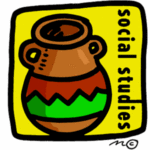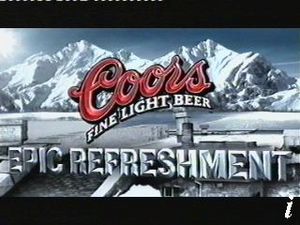I. Heading:
Lesson 1: Pearl Harbor
Grade 6
25 Students
40 Minutes
II. Rationale/Standards:
Pearl Harbor will forever be a chapter in United States and World History. It’s important for students to understand the history of the United States and what obstacles it has overcome to make it what it is today. To accomplish this, students must be able to recognize historical dates, figures and locations of our past to make them better prepared for the future. The students have already been introduced to World War II up until the bombing of Pearl Harbor.
PA History Standards:
8.1.6A Understand chronological thinking and distinguish between past, present and future time.
8.1.6C Explain the fundamentals of historical interpretation.
8.4.6B Identify and explain important documents, material artifacts and historic places in world history.
8.4.6D Explain how conflict and cooperation among social groups and organizations affected world history.
III. Objectives:
TLW be able to identify the event and the people involved which brought the United States into World War II.
PI: By using a radio broadcast and questioning the students will be able to identify the event that brought the U.S. into World War II. They will do this by writing a newspaper article.
TLW be able to explain and understand the attack on Pearl Harbor.
PI: By using photographs, radio broadcasts and questioning, the students will write a newspaper answering the following questions about Pearl Harbor; Who? What? When? Where? and Why?
IV. Resources/Materials:
• December 7, 1941 news broadcast of the bombing of Pearl Harbor
• FDR’s December 8, 1941 Declaration of War Speech
• Photographs of the bombing of Pearl Harbor (enough for all students)
• Paper
• Pencils
• Glue or Tape
• CD or tape player
• A map of Pearl Harbor
• Newspaper worksheet
V. Procedures:
A. Introduction/Motivation:
1. An alarm clock will be set to go off at 7:55 AM.
2. After the alarm clock goes off I will begin playing the broadcast of December 7, 1941.
3. Tell the students that it’s a quiet Sunday morning in Pearl Harbor, its 7:55 AM. Many people are waking up getting ready for their day. How do you think you would have felt if you would have turned on the radio and heard that broadcast, or were actually in Pearl Harbor at that time?
4. The teacher can then play the broadcast again.
B. Lesson Body:
1. The teacher will begin by asking students; Where is Pearl Harbor is located?
2. Explain that Pearl Harbor is located in Hawaii.
3. Ask the question When did this attack on Pearl Harbor take place? After student response write the correct date and time on the board. (December 7, 1941).
4. Pass around photographs of the destruction at Pearl Harbor.
5. Next, ask the question; Who was responsible for doing this to the United States? (Japan).
6. Ask the question; Why would Japan bomb the US? During WWII Japan wanted to take control of Southeast Asia. The Japanese believed that the US would pose a barrier on their conquest. Japan’s Admiral Isoruko Yamamoto designed a plan to attack the Pacific Fleet. If they attacked and destroyed the Pacific Fleet at Pearl Harbor they would be successful in their conquest to take Southeast Asia.
7. Did Yamamoto’s plan work? Although many lives were lost and many ships were destroyed the surprise attack was not a total success. There were many battleships (not in port at the time) still afloat. The shipyards, fuel storage areas, and submarine base suffered only minor damage.
8. What influence did this surprise attack have on the American people? Prior to this attack many Americans were undecided about getting involved in the war going on in Europe. After the attack, the issue over the U.S. involvement in WWII was unanimous. The majority of the country now supported the U.S. to joining the war and wanted to take victory over Japan.
9. How did Japan manage to carry out their plan without the U.S.‘s knowledge? The Japanese attack fleet sailed from northern Japan for the Hawaiian Islands. They followed a route that took them far to the north of the normal shipping lanes.
10.How long did this attack last? The attack started at 7:55 AM and ended at 9:55.
11.How many lives do you think were lost in this short attack? There were 2403 military and civilian deaths.
12.After talking about the deaths, show the display of the Pearl Harbor memorial. Give the students a short amount of time to come up and look at the memorial. This will give them a visual of exactly how many lives were lost, not just a number. The memorial will be displayed throughout the unit so they can take more time to examine it.
13.What was the result of this attack? Did the U.S. actually enter the war? Finally, the declaration of war speech will be played. The students will learn that this event is what brought the U.S. into the war.
C. Closure:
1. The students will now be journalists.
2. Pass out the newspaper worksheet and a plain piece of paper. This worksheet consists of the headings: Who, what, when, where and why.
3. Give them time to answer the questions on the worksheet.
4. After the students are finished answering the questions, they will prepare a short newspaper article in paragraph form. The article will answer the previous questions along with a heading and a picture. They can choose the
5. picture form the ones previously passed around.
6. They will then paste the picture on their article.
7. They can take them home and finish them and bring them back for the next lesson.
8. In the next lesson a few students can share their articles; they will then be displayed in the classroom. (or a book made out of them, one for each student?)
9. Pass out homework sheet.
VI. Evaluation:
A. Student Assessment:
1. Student’s learning will be informally assessed by their answers during the lesson.
2. Student’s learning will be assessed by their written newspaper articles.
3. Students learning will be assessed by their written “infamy” homework assignment.
B. Self Evaluation
1. Questions
a. What has each and every student learned in this lesson?
b. Did any students look bored or unclear with the material covered?
c. What were my strengths with this lesson?
d. What were my weaknesses with this lesson?
e. Did I include each and every student?



